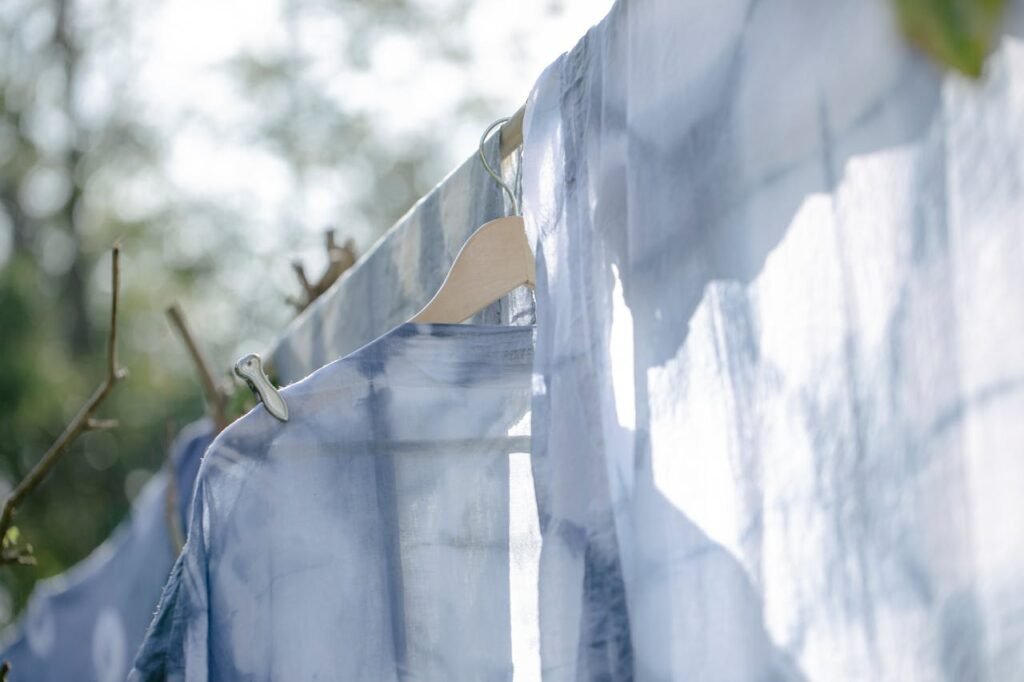Green Dry Cleaning: How the Industry is Getting Safer, and What It Means For You
Every time we pick up a suit or a coat from the cleaner, we rarely stop to think about what was used to make it look fresh. For decades, a solvent called perchloroethylene — usually shortened to “perc” — was the industry standard. It’s effective at removing oil and grease, but it has a dark side: long-term exposure is linked to nervous-system damage, liver and kidney harm, and cancer risks for workers and people who live near leaking shops. A major U.S. regulatory review concluded that perc presents an “unreasonable risk” to human health and moved to restrict many of its uses. According to the U.S. Environmental Protection Agency, the agency finalised risk-management rules for perchloroethylene in 2024 after finding significant health risks from occupational and bystander exposures.
That regulatory shift is not theoretical. States and local regulators have already taken action. California’s Air Resources Board phased out perc in dry cleaning operations (with rules effective by January 1, 2023), and New York’s environmental agency has strict controls and a timeline for replacing older perc machines. These policies change the economics and the choices dry cleaners must make, and they push the market toward safer methods. According to the California Air Resources Board, perc will no longer be used in dry-cleaning operations by January 1, 2023.

Real shops going green
Switching from perc to alternatives is a real, practical story — and not just a policy headline. In many U.S. towns, shop owners have converted to professional wet cleaning (a water-based method that uses specialised machines, controlled cycles and mild detergents) or to alternatives such as silicone-based solvents and liquid CO₂ systems. Some conversions began more than a decade ago; others accelerated as regulators tightened rules. One small shop documented by the Toxics Use Reduction Institute (TURI) converted its storefront into a dedicated wet-cleaning facility in 2009 and tracked financial and performance data for a year. The owner said: “I am very happy to be using this equipment in my shop instead of sending clothes out to be cleaned in perc.” TURI’s case study shows that send-outs fell to zero and that dry-clean-only garments were mostly handled successfully in the wet-cleaning system, with modest changes to operating costs. A case study by TURI of Best Neighbourhood Care (BNC) in 2009 provides the conversion numbers and the owner’s quote.
Personal stories matter because they reveal how messy the change can be. Jean Cha, a high-volume cleaner in San Jose, switched away from petroleum hydrocarbon solvents under pressure from his landlord and nervous customers. He told a reporter, “Honestly, I think the clothes come out fresher and more stains come out in the wet-cleaning process than they do in dry cleaning.” That was not marketing copy — it came from an independent profile of wet-cleaning pioneers in California and shows how front-line owners judge quality and customer acceptance.
Not every alternative is identical. “Green” labels have sometimes been misleading: solvents marketed as safer can have their own trade-offs. For example, silicone-based solvents (marketed under brand names like GreenEarth) were reviewed by regulators and scientists; while regulators such as California’s agencies have allowed their use in certain processes, researchers caution that every solvent needs independent evaluation for environmental persistence and worker exposure. For many cities, professional wet cleaning — which uses no organic solvents at all — is the option regulators and public-health groups often recommend as the safest current alternative. According to the scientific literature and reviews of alternatives, professional wet cleaning is frequently the least hazardous option available.
Science and Policy: What the Research Shows
Public-health and environmental research played a central role in policy changes. The EPA’s risk evaluations and the December 2024 risk-management rule concluded that exposures to perc pose multiple health concerns and that controls and phase-outs are required to eliminate unreasonable risk. According to the U.S. EPA, the agency finalised a risk-management rule for perchloroethylene in 2024 after determining it presents an unreasonable risk under many conditions of use.
Academics and public-health experts have reviewed alternatives and concluded that wet cleaning often offers the best combined outcome for worker safety, consumer quality and environmental protection. A scientific review written by environmental health researchers summarised the evidence on perc and alternative solvents and highlighted professional wet cleaning as the safest current alternative for many shops. According to the review, switching to wet cleaning reduces chemical exposures and the long-term liabilities associated with solvent spills and contaminated soil and groundwater.
Economics matter, and the numbers are realistic rather than magical. Multiple program evaluations and case studies show that capital costs for a wet-cleaning conversion can be substantial up front but often pay back within a few years because shops avoid hazardous-waste handling, insurance headaches, and liability tied to perc. An analysis of five cleaners that switched from perc to wet cleaning found average payback periods around 2.5 years and positive returns on investment; TURI’s shop case study lists specific costs and shows how send-outs, reworks and customer claims dropped after conversion.
Not all alternatives are perfect. Silicone-based solvents, liquid CO₂ systems and modern hydrocarbon solvents each have trade-offs — cost, supply chain, fire codes, and different environmental footprints. Regulators have responded differently: California banned perc from dry cleaning by 2023 and provided incentives to help cleaners convert; New York and other states have created phased rules and reporting requirements to move shops away from perc. According to a report by the California Air Resources Board, the state approved regulations to reduce perc emissions and planned a phase-out that left wet cleaning and CO₂ exempt.

What Customers and Shop Owners Can Do Next
If you are a customer who wants safer cleaning, ask your cleaner what solvent they use and whether they offer professional wet cleaning. Many shops that switched report the same fit and stain performance as traditional dry cleaning, and some say the garments look fresher. If the cleaner markets itself as “green,” ask what that means — does it use wet cleaning, liquid CO₂, or a solvent that still carries chemical risks? Consumers can also slow the wash cycle of disposable habits: spot-treating stains at home, airing suits between wears, and using garment covers sparingly reduce how often items need professional cleaning.
If you own or run a shop, the data are clear: one credible pathway is to pilot professional wet cleaning on a small scale before committing to a full conversion. Training and process controls matter; early adopters report a learning curve, especially for pressing and tensioning garments, but also improved customer satisfaction when operators master the method. Look for grants, technical assistance and vendor training: several state programs and university partnerships have provided conversion support and business case studies. For example, state and academic programs have demonstrated the feasibility of conversions and have offered sample budgets, performance metrics and training tips. According to reliable sources, documented conversions show feasible payback periods and high performance when training and equipment choices are done properly.
For regulators and community groups, the path forward combines gentle nudges with strong support. Phasing out hazardous solvents while offering targeted incentives, training programs, and public information campaigns helps reduce the economic shock to small businesses and protects workers and neighbourhoods. Practical success stories in California and local conversion pilots show that meaningful progress is possible when regulators pair rules with assistance. The California Air Resources Board noted that its phase-out program included demonstration workshops, vendor lists, and grant programs to help cleaners transition.
Conclusion
The big picture is that safer options exist—and they work. Science and real-world tests show that professional wet cleaning and other solvent-free or low-risk methods reduce exposure and long-term environmental damage, while often making good business sense once shops invest in training and equipment. The shift away from perc is not merely regulatory paperwork; it is a practical redesign of how we care for clothing—one that benefits workers, neighbours, and customers.







